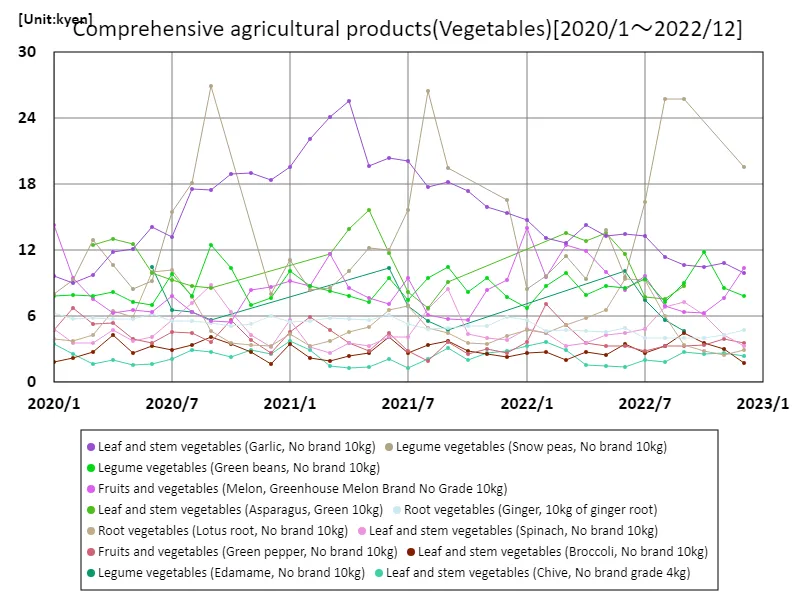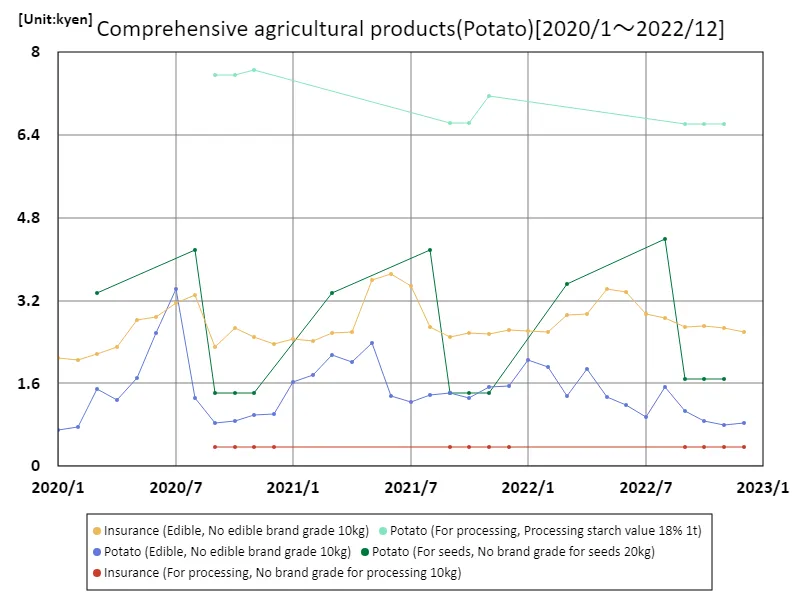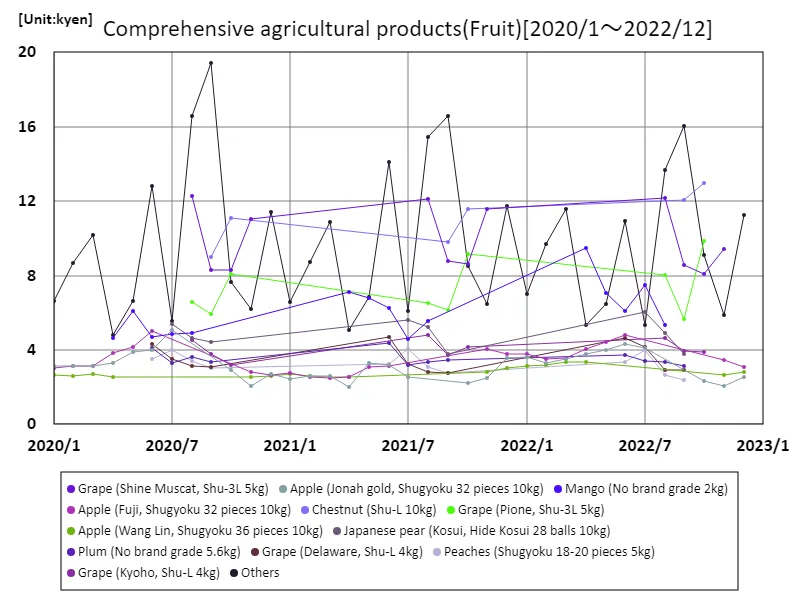Abstract
Price trends for agricultural products in Japan vary widely, but vegetables, potatoes, and fruits are attracting particular attention. According to data for December 2022, among cultivated vegetables, legume vegetables recorded the highest price, at Rs 19,600 per 10 kg. This is affected by fluctuations in the balance of demand and supply in the market, weather conditions, etc. Based on past trends, prices may fluctuate due to changes in season and production area. Factors such as quality and brand also affect the price. Similarly, for fruits and potatoes, prices reflect the relationship between supply and demand and fluctuations in production volume. Understanding agricultural price trends is important for producers and consumers, and is necessary information to respond to market changes.
General agricultural products (vegetables)
In Japan, the price of vegetables in the agricultural sector hit a record high of 26,900 yen in September 2020 for legume vegetables (peas, no brand grade, 10 kg), but has since fallen to about 72.8% of the peak. These price fluctuations are influenced by many factors, including seasons, weather conditions and changes in production. The balance between supply and demand also has a significant impact on prices. Historical trends show that agricultural commodity prices can exhibit certain cyclical patterns. Factors such as peak demand periods and changes in production locations affect prices. Agricultural producers and market participants need to be sensitive to such price fluctuations.


The maximum is 26.9kyen[2020年9月] of Legume vegetables (Snow peas, No brand 10kg), and the current value is about 72.8%
General agricultural products (potatoes)
In Japan, the price of potatoes in the agricultural industry reached a high of 7,660 yen per ton (for processing, processing starch value 18%) in November 2020, but has since fallen to about 86.5% of the peak. These price fluctuations are influenced by factors such as the balance between supply and demand, changes in production locations, and weather conditions. In particular, weather conditions can affect potato growth, affecting yield and quality. Prices of processed foods are also affected by changes in demand and the stability of raw material supplies. Farmers and processors need to be responsive to market fluctuations and adapt flexibly to changes in demand and supply.


The maximum is 7.66kyen[2020年11月] of Potato (For processing, Processing starch value 18% 1t), and the current value is about 86.5%
General agricultural products (fruit)
In 2020, the price of fruit in Japan reached a record high of 13,000 yen for 10 kg of chestnuts (shredded). The average price is 2,740 yen, and the total amount is 60,300 yen. Fruit prices fluctuate depending on the season, weather, and the balance of supply and demand. Seasonal changes in particular have a big impact on prices. During times of increased demand, prices tend to rise and when supply increases, prices tend to fall. Prices also vary depending on the quality and brand. Changes in fruit growing location and production also affect prices. Supplying the market with a variety of fruit varieties and qualities that meet consumer demand will lead to price stability. It is important for agricultural producers and distributors to understand fluctuations in fruit prices and respond appropriately.


The maximum is the latest one, 13kyen of Chestnut (Shu-L 10kg)



Comments